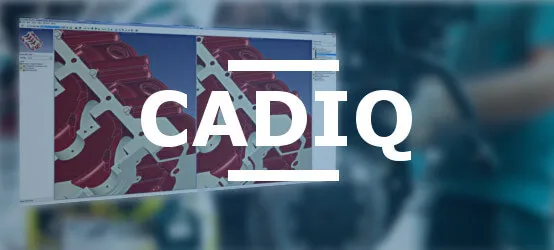Long Term Archival : Archive and retrieve CAD models in the future
Dive into the pivotal realm of CAD data archiving, an integral element in engineering and manufacturing operations. Yet, long-term storage of CAD models is a more intricate task than just performing regular backups. Numerous variables must be navigated to circumvent ending up with an array of irretrievable or inaccurate CAD models. Storage mediums and archiving methodologies aside, the format in which CAD models are archived stands as a crucial concern.
The Challenge of Preserving Native CAD Data
Native CAD data, tailored to a specific software application, stands at risk of obsolescence within a few years. Simply copying the installation media for applications that generate these data and the associated operating system environment is not a reliable long-term solution. This underscores the need for CAD models to be stored in a format that will be readily accessible in the future, even if the original software is defunct.
The Evolution of Archiving Techniques: 3D Model Preservation
Historically, only 2D drawing data were archived in formats like TIFF and CGM. However, as we progressed into the age of 3D data content, both methods and tools have evolved:
- Before 1980: Mainly manual paper drawings and microfilms were used.
- Between 1980-1995: Primarily 2D CAD drawings and a minor percentage of manual paper drawings were in vogue. Subsequently, 3D surface CAD design was introduced.
- From 1995-2006 onwards: The use of 3D solid and assembly CAD design led to generating 2D drawings from 3D master models. Subsequently, the use of 3D solids and assemblies with extended GD&T design information became viable.
Choosing the Right Format: Secure CAD Storage
Today, neutral formats like STEP and JT are regarded as the safest for long-term storage. These formats are readable by multiple CAD applications and are designed to be scalable. However, selecting a format is just the tip of the iceberg. Automated validation and verification procedures must be put in place to prevent storing erroneous, corrupt, or invalid legacy data.
Sustainable CAD Management: A Continuous Effort
When archiving CAD models for long-term storage, remember that the archiving process is not a one-time event. Data must be routinely reviewed and updated to ensure it remains accessible and accurate. Moreover, cloud-based CAD Archiving Interoperability can offer additional flexibility and accessibility, enabling easy access to CAD models from anywhere at any time.
Design Data Longevity: The Road Ahead
In conclusion, CAD data archiving is a fundamental component in the management of engineering and manufacturing operations. Ensuring future access and utility of CAD models involves archiving them in a neutral and scalable format like STEP or JT. Automated validation and verification procedures should also be implemented to prevent the storage of incorrect or invalid legacy data. By taking these steps, companies can ensure that their CAD data remains accessible, accurate, and useful for years to come.
In industry, long-term archiving of CAD data represents a crucial strategic issue. Beyond simple preservation, model validation ensures their future usability in a context of constant technological evolution. Aerospace, automotive, and defense companies face major challenges: how to ensure that their digital models will remain usable and faithful to their design intent over decades?
The LOTAR (LOng Term Archiving and Retrieval) standard establishes a rigorous framework for this issue, but its implementation requires specific validation processes. Without precise data qualification, archived models risk becoming unusable or, worse, introducing errors when reused in the future.
The LOTAR (Long-Term Archival and Retrieval) initiative represents a major advancement in the field of digital preservation for the aerospace and defense industries. Faced with aircraft lifecycles that can reach 50 years, while digital formats and software become obsolete in just a few years, LOTAR establishes a standardized framework crucial for ensuring the accessibility and integrity of technical data over several decades.
Developed by an international consortium of major industrial players, this standard offers a standardized approach based on neutral formats such as STEP AP242, thereby preserving all critical information - 3D models, PMI (Product Manufacturing Information) and product structures - independently of technological evolution. The stakes are considerable: without a sustainable archiving solution, the entire technical digital heritage risks becoming inaccessible, compromising maintenance, certification, and future evolution of aircraft.


